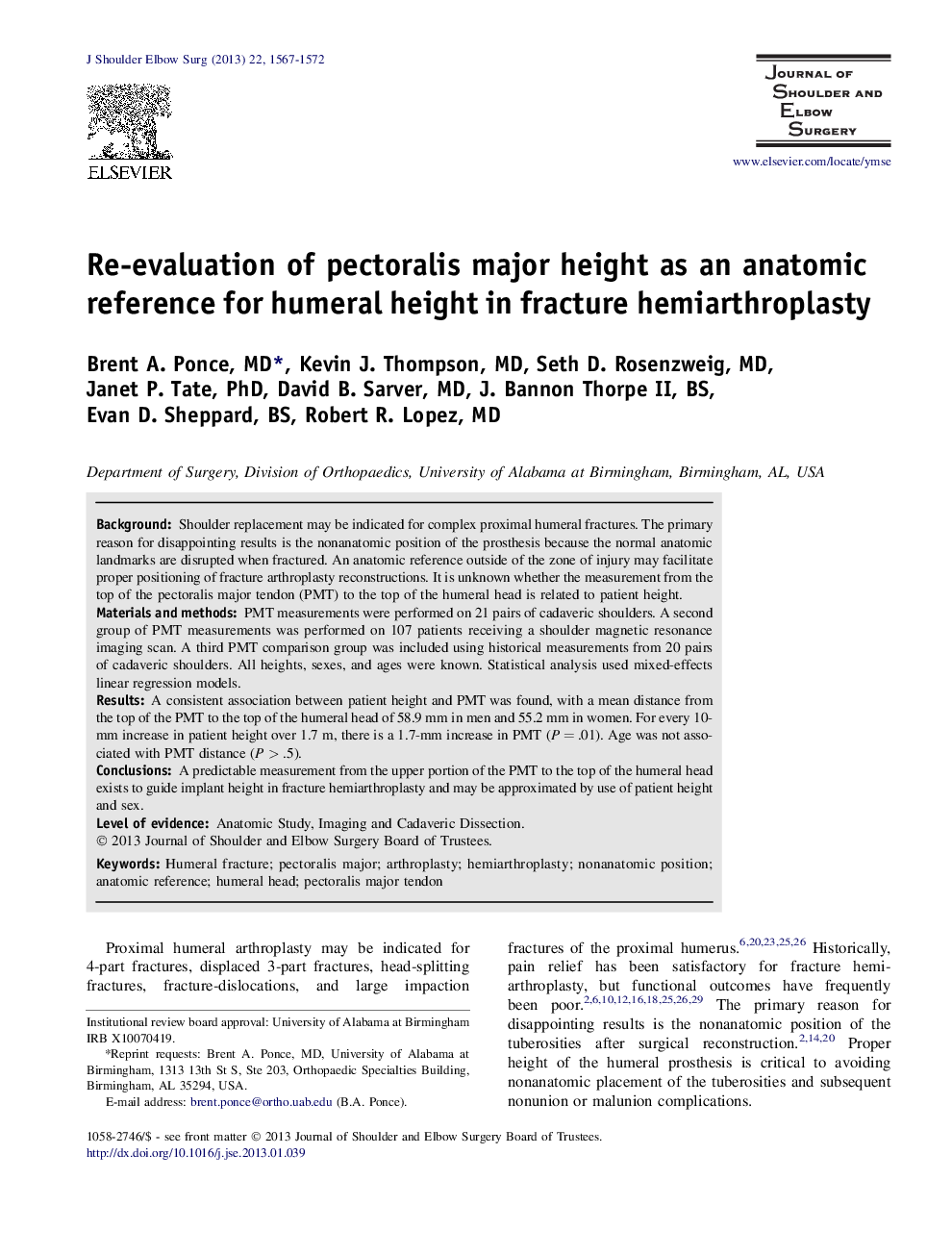| Article ID | Journal | Published Year | Pages | File Type |
|---|---|---|---|---|
| 4073926 | Journal of Shoulder and Elbow Surgery | 2013 | 6 Pages |
BackgroundShoulder replacement may be indicated for complex proximal humeral fractures. The primary reason for disappointing results is the nonanatomic position of the prosthesis because the normal anatomic landmarks are disrupted when fractured. An anatomic reference outside of the zone of injury may facilitate proper positioning of fracture arthroplasty reconstructions. It is unknown whether the measurement from the top of the pectoralis major tendon (PMT) to the top of the humeral head is related to patient height.Materials and methodsPMT measurements were performed on 21 pairs of cadaveric shoulders. A second group of PMT measurements was performed on 107 patients receiving a shoulder magnetic resonance imaging scan. A third PMT comparison group was included using historical measurements from 20 pairs of cadaveric shoulders. All heights, sexes, and ages were known. Statistical analysis used mixed-effects linear regression models.ResultsA consistent association between patient height and PMT was found, with a mean distance from the top of the PMT to the top of the humeral head of 58.9 mm in men and 55.2 mm in women. For every 10-mm increase in patient height over 1.7 m, there is a 1.7-mm increase in PMT (P = .01). Age was not associated with PMT distance (P > .5).ConclusionsA predictable measurement from the upper portion of the PMT to the top of the humeral head exists to guide implant height in fracture hemiarthroplasty and may be approximated by use of patient height and sex.
